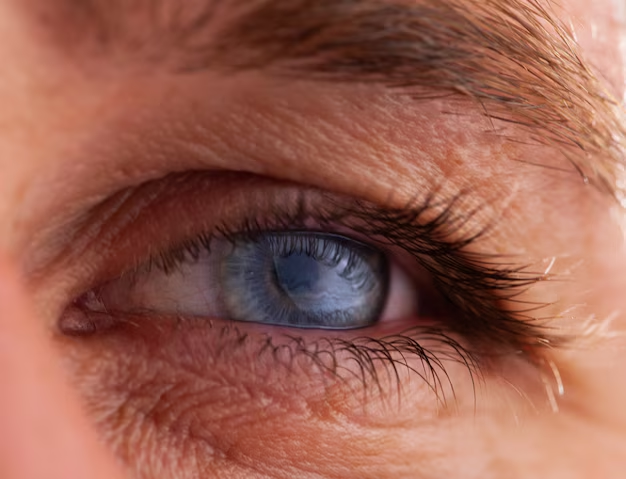Understanding Cataract Development: Symptoms, Causes, and What to Expect
Imagine seeing the world through a foggy window. Colors look dull, lights have halos, and clarity is lost. This scenario is common for someone developing a cataract. Cataracts form when the lens of the eye becomes cloudy, leading to a progressive decline in vision quality. Let's delve into what happens when a cataract develops, covering symptoms, causes, and other pertinent aspects of this condition.
What Are Cataracts?
A cataract is a clouding of the eye’s natural lens, which lies behind the iris and pupil. As this clouding increases over time, it obstructs light from passing through to the retina, leading to blurred or impaired vision.
Types of Cataracts
Nuclear Cataracts: These form in the center of the lens and often result in nearsightedness. Over time, the lens may turn yellow or brown, further affecting vision.
Cortical Cataracts: These start as whitish streaks on the outer edge of the lens cortex and progress inward, interfering with light passing through the center of the eye.
Posterior Subcapsular Cataracts: These occur at the back of the lens and can interfere with reading vision, reduce vision in bright light, and cause halos or glares around lights at night.
Symptoms of Developing Cataracts
Recognizing the symptoms of a developing cataract can guide individuals towards timely consultation with eye care professionals. Here are common signs to watch for:
Blurry Vision: As cataracts develop, vision clarity reduces, making everyday tasks challenging.
Faded Colors: Colors may appear dull or less vibrant over time.
Difficulty with Night Vision: Increased glare from headlights and street lamps can make driving at night problematic.
Light Sensitivity: Increased sensitivity to light and glare can occur, making bright environments uncomfortable.
Frequent Prescription Changes: Needing frequent updates to eyeglasses or contact lens prescriptions can indicate cataract progression.
Causes and Risk Factors
While cataracts are predominantly age-related, several factors can accelerate their development:
Aging: As we age, the proteins in the lens can break down, leading to cloudiness.
Diabetes: High sugar levels can influence cataract development due to the impact on the eye’s lens.
UV Exposure: Prolonged exposure to ultraviolet light from the sun is a known risk factor.
Smoking and Alcohol Use: These lifestyle habits are linked to an increased risk of cataracts.
Certain Medications: Long-term use of steroids, especially in high doses, can promote cataract formation.
Eye Injuries: Trauma to the eye can lead to cataracts later in life.
How Cataracts Affect Daily Life
When cataracts start affecting vision, daily routines can become more challenging. Tasks like reading, driving, and recognizing faces might require more effort. Changes in vision can also lead to increased dependence on visual aids and modifications in the environment, such as adjusting lighting or enhancing contrast in home settings.
Practical Tips for Managing Early Symptoms
Improved Lighting: Enhance lighting in your home to make reading and activities easier.
Eye Protection: Wear sunglasses or hats with brims to block UV rays and reduce aggravation from bright light.
Regular Eye Exams: Consistent check-ups help monitor changes in vision and adjust corrective measures accordingly.
Diet Considerations: A diet rich in antioxidants, vitamins C and E, and omega-3 fatty acids can support eye health.
FAQ: Addressing Common Concerns
Can Cataracts Be Prevented?
While cataracts cannot be entirely prevented, certain lifestyle adjustments can reduce the risk of early development:
Healthy Diet: Eating a balanced diet with plenty of fruits and vegetables supports ocular health.
Regular Check-ups: Eye exams are crucial in early detection and management, potentially slowing progression.
Lifestyle Choices: Avoid smoking and excessive alcohol consumption, both of which are linked to cataracts.
When Should You Seek Professional Advice?
If you notice persistent changes in vision affecting your daily activities, it’s essential to consult with an eye care professional. They can diagnose cataracts and provide management options, including potential surgical intervention when necessary.
Cataract Surgery: An Overview
What Happens During Cataract Surgery?
Cataract surgery is a common and effective procedure to restore vision by removing the cloudy lens and replacing it with an artificial one. Here’s a concise overview:
Procedure: Typically performed outpatient, this surgery involves minimal downtime. The cloudy lens is removed and replaced with a clear, artificial intraocular lens (IOL).
Recovery: Most patients experience significant vision improvement within a few days. Full recovery may take a few weeks, during which time regular follow-up appointments ensure proper healing.
Stories from Patients
Many who undergo cataract surgery report dramatic improvements in vision clarity and color perception, significantly enhancing their quality of life. Listening to these experiences can provide encouragement and build understanding among those considering the procedure.
Key Takeaways and Practical Summary
Let's look at some practical tips for recognizing and managing cataracts:
- 👀 Monitor Vision: Be vigilant of changes in vision and seek timely professional advice to address concerns.
- 🌞 Protect Eyes: Use sunglasses outdoors to mitigate UV exposure.
- 🍎 Prioritize Nutrition: Eat a diet rich in antioxidants and maintain general health to support eye wellbeing.
- 🕶️ Plan for Surgery: Understand that cataract surgery is a highly successful option for restoring vision when necessary.
Cataracts are a common part of aging, but knowing what to expect can help individuals manage them effectively, making it possible to lead a fulfilling life with optimal vision. Recognizing early symptoms, understanding treatment options, and following preventive measures are vital steps that contribute to eye health and quality of life.
